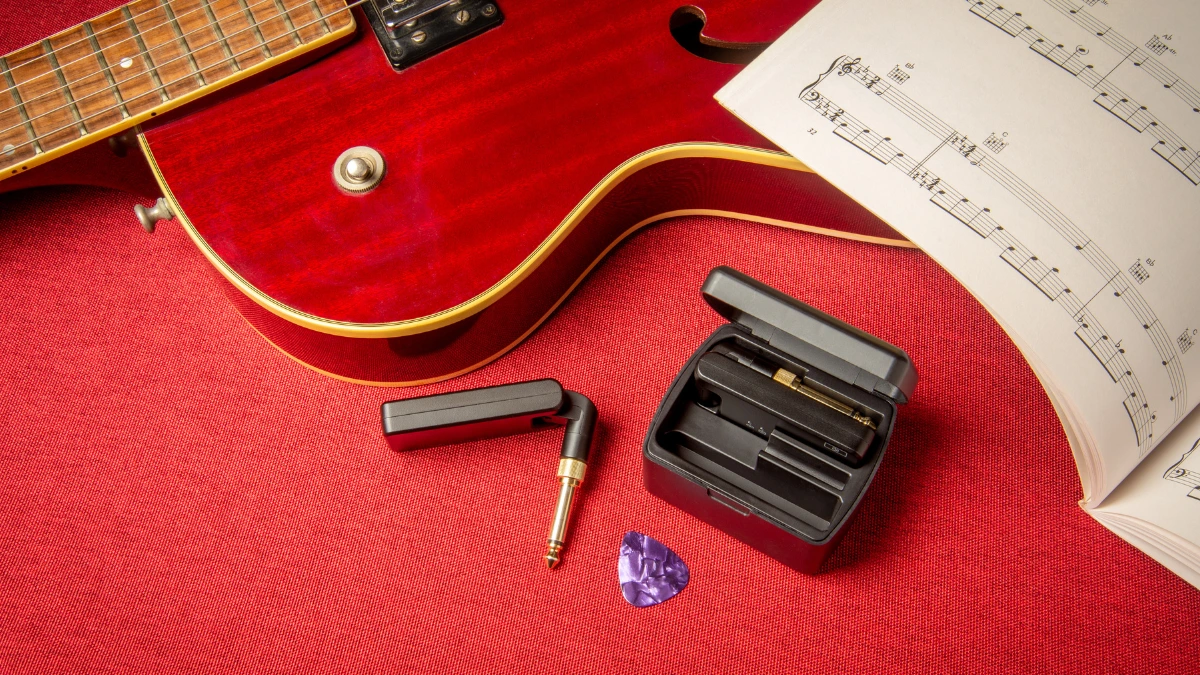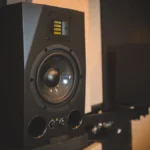Wireless guitar jacks are emerging as technology becomes the answer for guitarists seeking freedom from the constraints of instrument cables.
With a wireless guitar jack, you will experience ease of use, better mobility, comfort, and low latency.
Guitarists can read this article until the end to find out more about wireless guitar jacks from the definition, how they work, the advantages of using them, to the regulations for using them in Indonesia.
Also Read
Table of Contents
What is a Wireless Guitar Jack?

With a wireless guitar jack, an electric guitar can be connected to an amplifier or audio device wirelessly, replacing the function of cables. With this tool, guitarists can also move freely without having to be hindered by cables.
This guitar jack systems are divided into two, namely digital wireless systems and analog wireless systems. Digital technology usually offers low latency and good sound quality, while analog technology is usually more affordable than digital systems.
How Wireless Guitar Jack Works?
A wireless guitar jack, or guitar wireless system, works by sending the audio signal from the guitar to the amplifier wirelessly instead of through a physical cable. Here’s more detail on how wireless guitar jacks work:
- The audio signal from the guitar is transmitted: When the guitar is played, the pickups convert the vibrations of the strings into electrical audio signals.
- The transmitter receives the signal from the guitar: A transmitter, which is generally connected through the guitar jack, receives these electrical audio signals and converts them into radio waves for wireless transmission.
- Receiver accepts the signal from the transmitter: The receiver, which is usually placed near the amplifier, captures the radio waves emitted by the transmitter.
- The receiver processes the signals: After receiving the radio waves, the receiver decodes them and returns them as audible audio signals.
- Connects to the amplifier: The audio signal that has been converted by the receiver is then fed to the amplifier, allowing the guitar sound to be heard without any physical wires.
The Advantages of Wireless Guitar Jack

Wireless guitar jacks offer several advantages, especially when it comes to mobility and convenience while playing the guitar. Here are some of the advantages of this guitar jack that you can experience when using it:
1. Better mobility
One of the main advantages of a wireless guitar jack is better mobility. This guitar jack allows you to move freely while playing the guitar. So when you move, you don’t have to worry about the length of the attached cable.
2. Comfort
With no cables connected, of course, it will make you more comfortable when playing guitar. Wireless guitar jacks also make your playing area clean from cables and look neater, so you don’t have to worry about cables interfering or tripping you up.
3. Ease of use
This guitar jack has an easy-to-use system and does not require complicated settings. By simply plugging the wireless jack into the guitar to the amplifier you can immediately play your guitar easily.
4. Wide range
At first, wireless guitar jacks were considered to have a wide range. But nowadays, some wireless systems already offer a wide range, allowing you to play your guitar in a larger area.
5. Low latency
Another advantage of a wireless guitar jack is its low latency. Modern wireless systems have very low latency, so there is no significant lag between when you play and the sound you hear.
Wireless Guitar Jack Regulations in Indonesia

Wireless guitar jack uses communication technologies such as Short Range Devices (SRD) that operate within a specific frequency spectrum. In Indonesia, any SRD-based wireless device is required to have DJID (Directorate General of Digital Infrastructure) under the Ministry of Communication and Digital (KOMDIGI).
Wireless guitar jack regulation is based on KEPMEN No. 260 Tahun 2024, which requires all radio frequency-based devices, including wireless guitar jacks, to meet specific technical standards before being sold in the country.
The DJID certification ensures that the product meets government safety and quality regulations and does not interfere with other communication devices. The certification process involves technical testing, such as frequency adjustments, safety checks, and compatibility with the surrounding environment.
Once the tests are completed, products that pass are listed in a Test Result Report, which confirms that the product is safe and ready for sale in Indonesia. This report reassures customers that the product meets technical standards and is secure.
For companies wanting to sell a wireless guitar jack in Indonesia, Type Approval Certification Services for ICT Products are available to assist with this process. This service includes preparing technical and legal documents, conducting required testing, ensuring compliance with regulations, helping companies streamline the certification process, and giving consumers confidence in certified products.


















